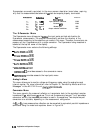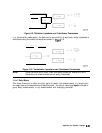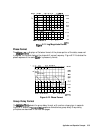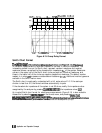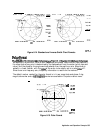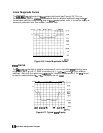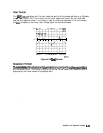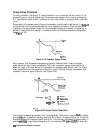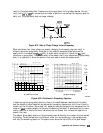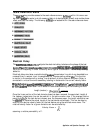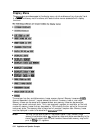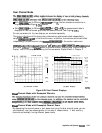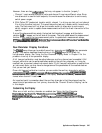
Group Delay Principles
For many networks, the amount of insertion phase is not as important as the linearity of the
phase shift over a range of frequencies The analyzer can measure this linearity and express
it in two different ways: directly, as deviation from linear phase, or as group delay, a derived
value.
Group delay is the measurement of signal transmission time through a test device. It is dehned
as the derivative of the phase characteristic with respect to frequency. Since the derivative
is basically the instantaneous slope (or rate of change of phase with respect to frequency), a
perfectly linear phase shift results in a constant slope, and therefore a constant group delay
(see
Figure
6-19).
pg6182_C
Figure 6-19. Constant Group Delay
Note, however, that the phase characteristic typically consists of both linear and higher
order (deviations from linear) components The linear component can be attributed to the
electrical length of the test device, and represents the average signal transit time. The higher
order components are interpreted as variations in transit time for different frequencies, and
represent a source of signal distortion (see Figure 6-20).
4
Frequency
Group Delay =
T
g=
2
$
in Radians
w
in
Radians/Set
-1
d@
$
in Degrees
=
-.-
360”
df f
inHz(w=2rcf)
pb6115d
Figure 6-20. Higher Order Phase Shift
The analyzer computes group delay from the phase slope. Phase data is used to
find
the phase
change,
AC&
over a specified frequency aperture, Af, to obtain an approximation for the rate of
change of phase with frequency (see Figure 6-21). This value,
~z,
represents the group delay in
seconds
ass-
linear phase change over Af. It is important that
A+
be
5
180”,
or errors will
6-38 Application and Operation Concepts



